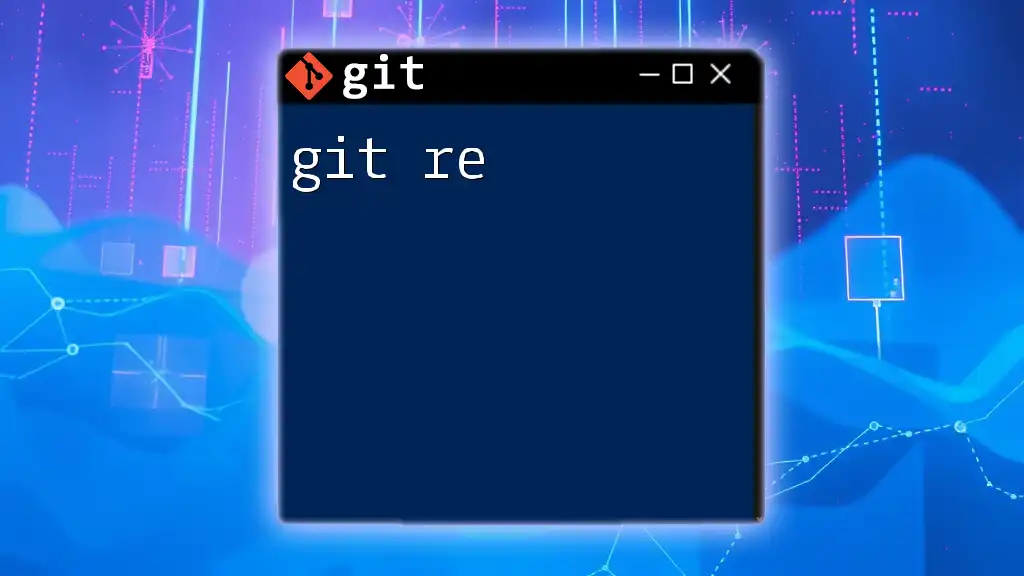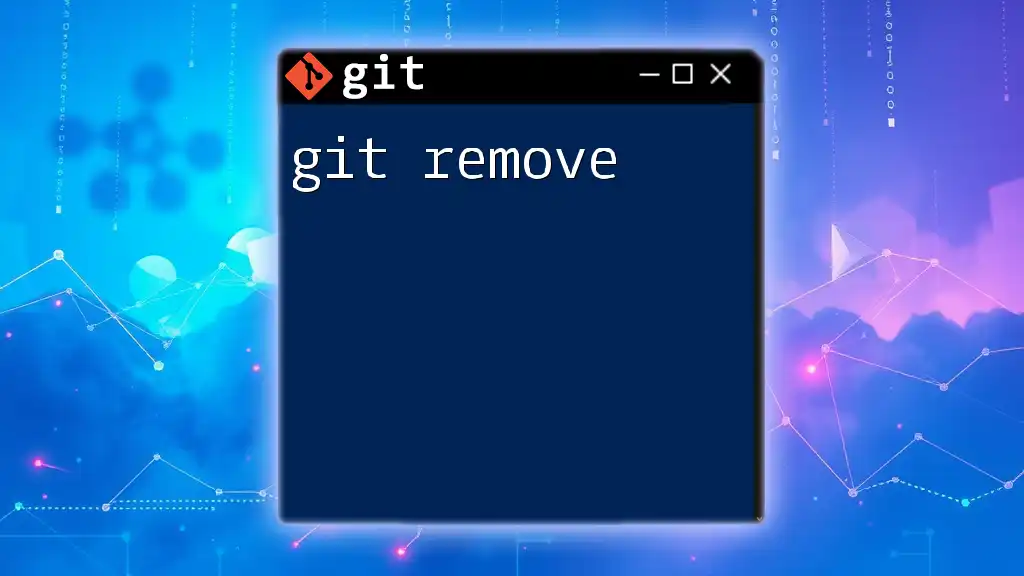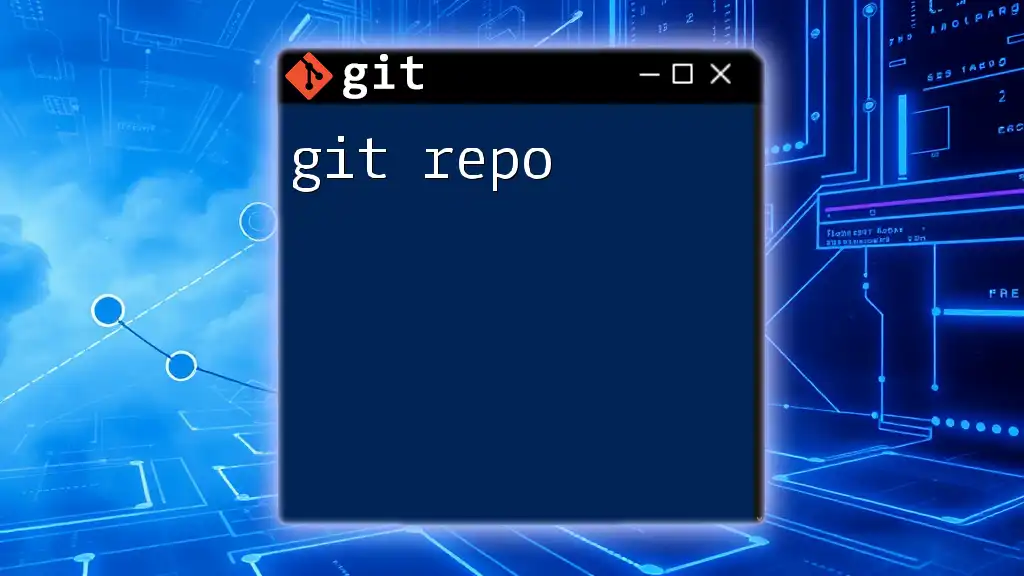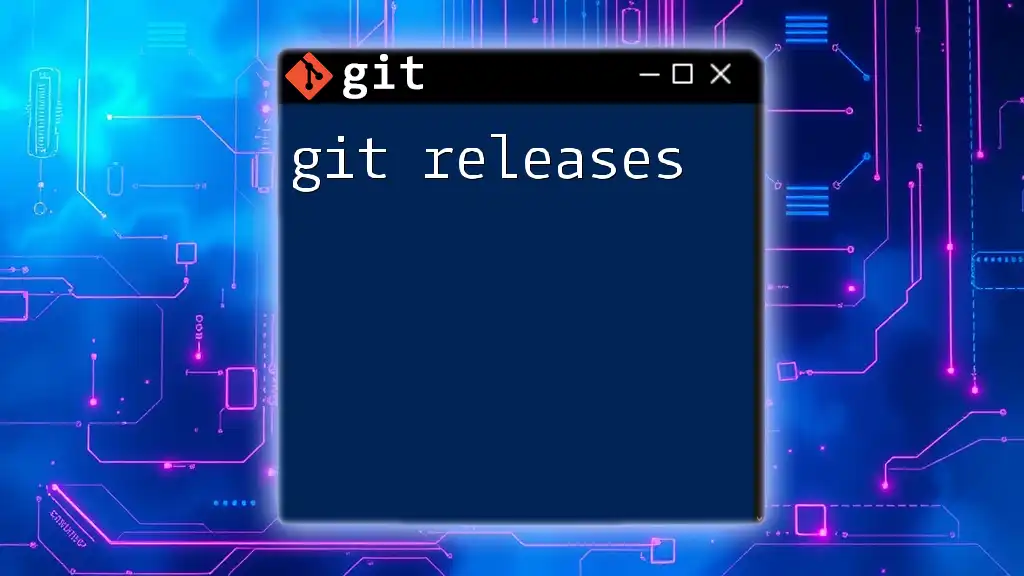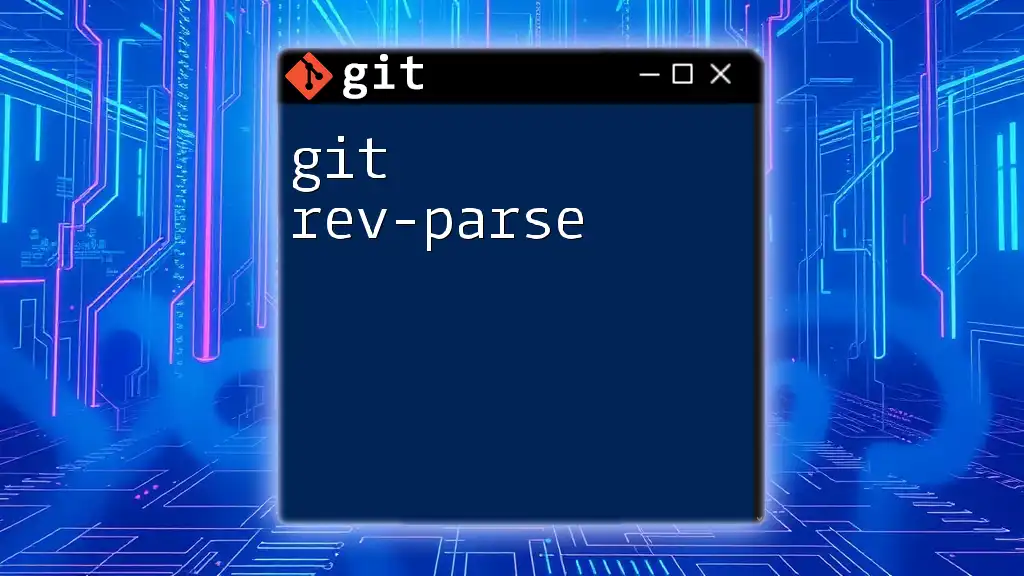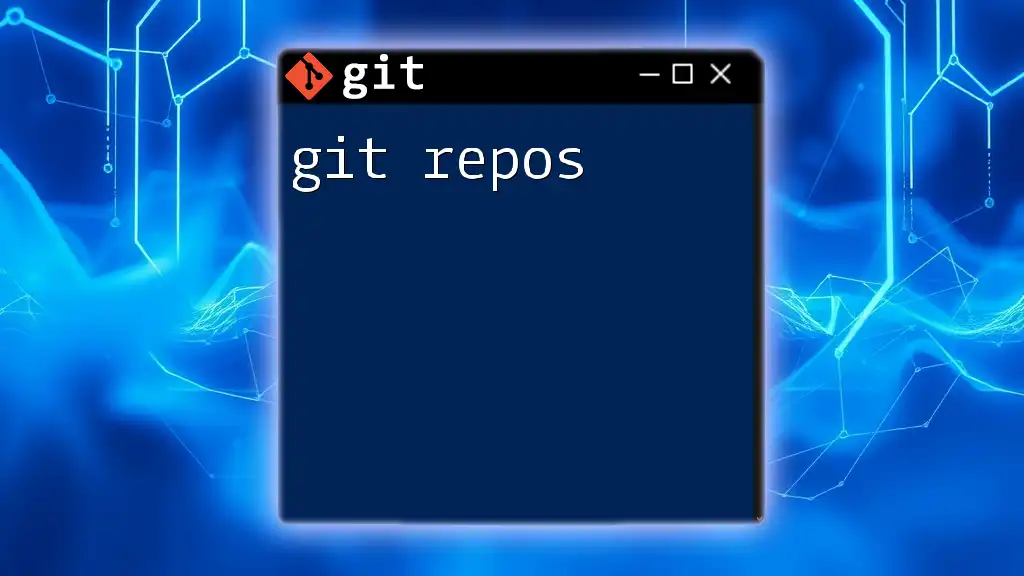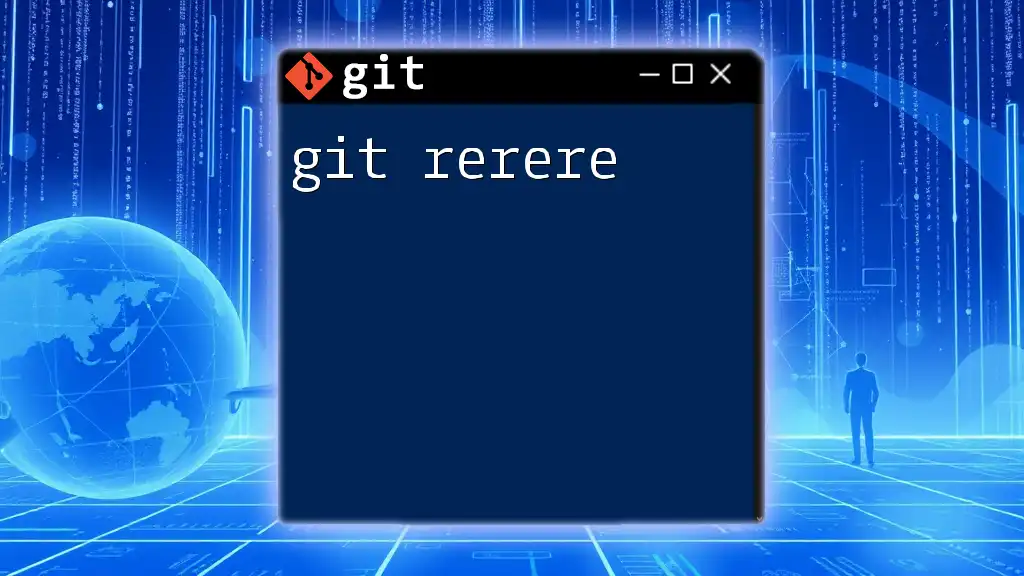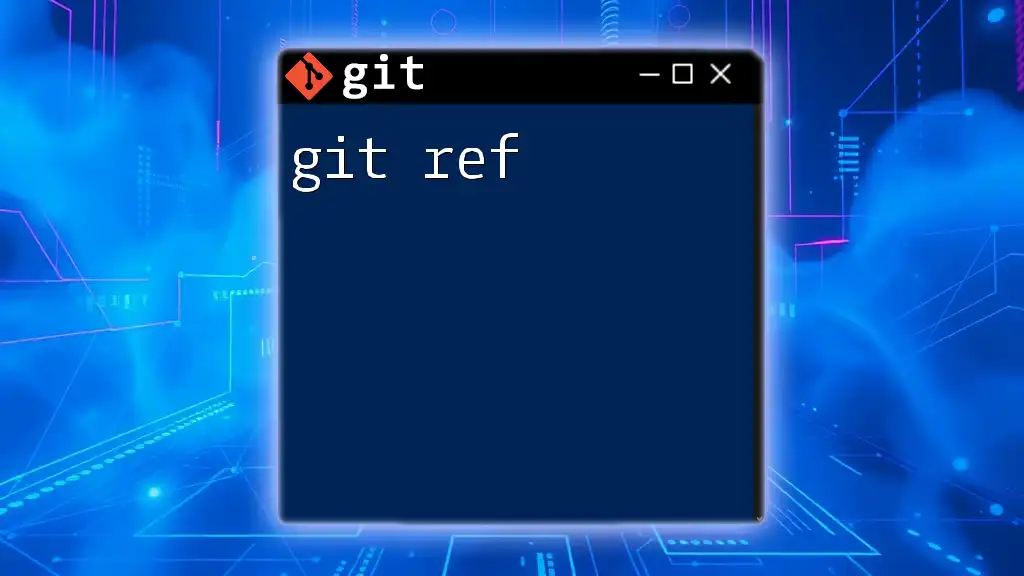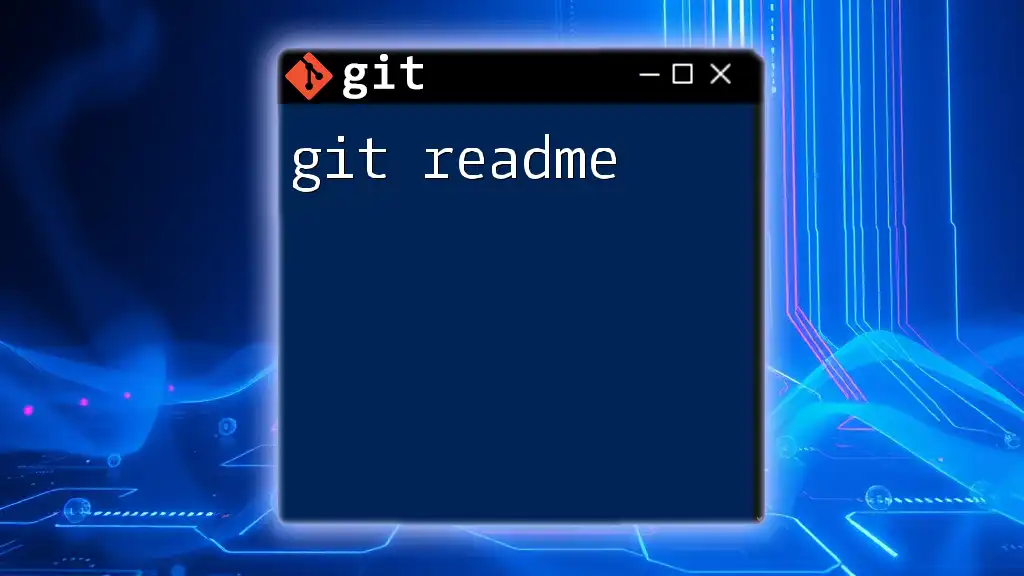The `git re` command is not a standalone command, but it often refers to abbreviated forms like `git reset` or `git rename`, and it can be used in the context of starting interactive rebase with `git rebase`, which allows you to rewrite commit history.
git rebase -i HEAD~3
Understanding the Basics of `git re`
What Does `git re` Stand For?
In the world of Git, `git re` is commonly understood as shorthand for various commands that start with "re", including `reset`, `revert`, `rebase`, and `reflog`. Each of these commands plays a distinct role in managing versions and changes in your repositories.
Overview of `git re` Commands
The `git re` commands include:
- `git reset`: Alters the current branch and optionally modifies the working directory or index.
- `git revert`: Creates a new commit that undoes changes made in a specified commit.
- `git rebase`: Applies changes onto a different base branch, facilitating a cleaner linear history.
- `git reflog`: Records updates to the tips of branches, allowing recovery of lost commits.
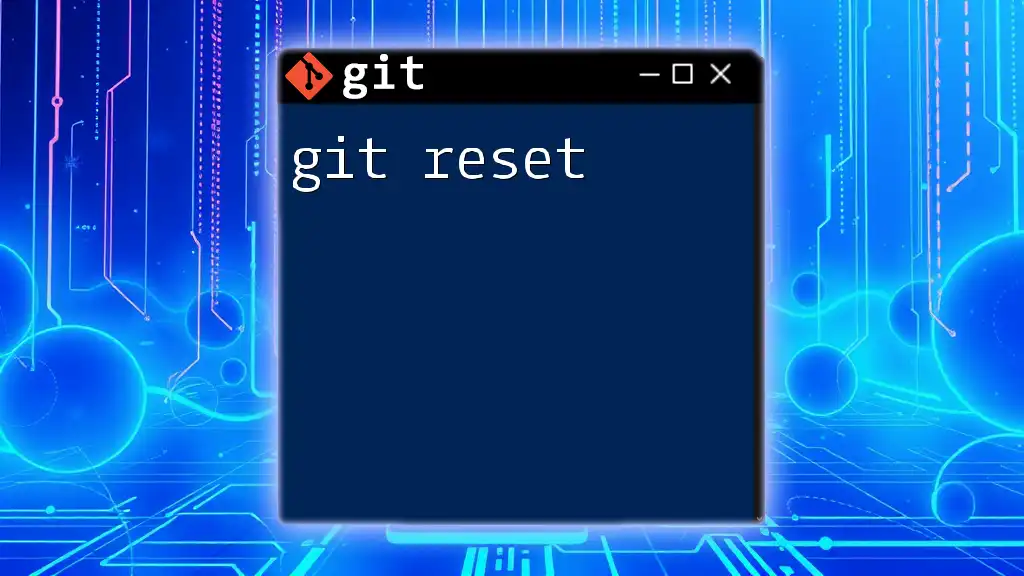
Breaking Down the Key `git re` Commands
Git Reset
Definition and Purpose
The `git reset` command is versatile and allows you to move the current HEAD to a specified state. It can also modify the index and working directory, depending on the options you choose.
Types of Reset
-
Soft Reset
The soft reset moves the HEAD pointer to a different commit but leaves your working directory unchanged. This is useful when you want to uncommit changes yet keep them staged for further modification.
Command:git reset --soft <commit>Example:
git reset --soft HEAD~1This command moves the HEAD to the previous commit while retaining the changes in the index, making it easy to amend your commit.
-
Mixed Reset
By default, `git reset` operates using mixed mode. It moves the HEAD and updates the index without modifying your working directory. This is beneficial when you want to unstage changes without losing them.
Command:git reset --mixed <commit>Example:
git reset --mixed HEAD~1This effectively unstages the last commit while keeping your changes intact.
-
Hard Reset
A hard reset moves the HEAD to a specified commit and also resets the index and working directory to match. Use with caution, as this will discard all changes made after the specified commit.
Command:git reset --hard <commit>Example:
git reset --hard HEAD~1This command will erase local changes and revert your branch back to the last committed state.
Git Revert
Definition and Purpose
Unlike `git reset`, the `git revert` command creates a new commit that undoes the changes made in a specific commit. This preserves the history and is beneficial in collaborative environments where you want to maintain a clear log of changes.
How to Use Git Revert
To revert a commit, use the following command:
Command:
git revert <commit>
Example:
git revert a1b2c3d
This command generates a new commit that negates the changes made in the specified commit `a1b2c3d`. It’s important to note that any new conflicts introduced by the revert will need to be resolved before finalizing the process.
Git Rebase
Definition and Purpose
The `git rebase` command is utilized to apply changes from one branch onto another. It is an alternative to merging that maintains a linear history, making commits easier to navigate and understand.
Types of Rebase
-
Interactive Rebase
An interactive rebase lets you rewrite commit history, allowing tasks such as squashing, reordering, or editing commits. This can significantly clean up your branch before integrating changes.
Command:git rebase -i <commit>Example:
git rebase -i HEAD~3This command opens an editor where you can manipulate the last three commits, enabling you to combine or modify as needed.
-
Automatic Rebase
The automatic rebase applies the changes made in the current branch onto the upstream branch, integrating updates smoothly.
Command:git rebaseExample:
git rebase origin/mainThis will apply any local changes on top of the latest changes from the `main` branch.
Git Reflog
Definition and Purpose
The `git reflog` command records updates to the tips of branches and allows you to view the history of where your branches have pointed. This is especially useful for recovering lost commits.
How to Use Git Reflog
To view your reference logs, run:
git reflog
This command will display a list of actions you've taken, showing previous commit pointers, which can then be utilized to recover or revert to specific points in your history.
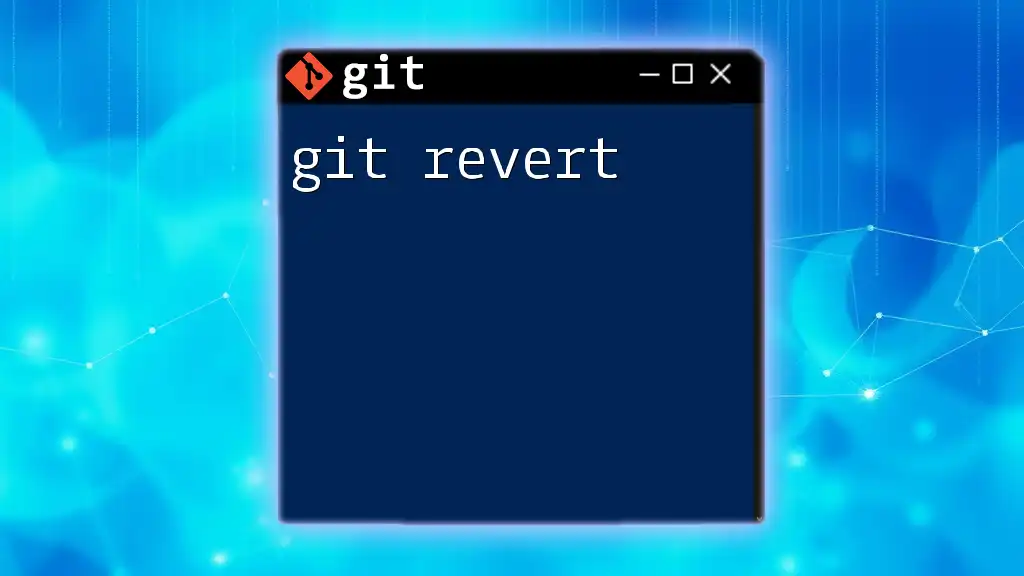
Practical Examples and Use Cases
Case Study: Recovering a Lost Commit
Imagine you accidentally performed a hard reset and lost critical work. By using `git reflog`, you can identify where your branch was before the reset. Locate the commit hash you want to recover, and then use:
git checkout <commit-hash>
to switch back to that state.
When to Choose `reset`, `revert`, or `rebase`
Use a soft or mixed reset for minor changes in your commit history where you want to make additional commits. Opt for revert when you need to negate changes without altering history, and utilize rebase when you want to apply commits onto another branch or tidy up commit history before consolidating.
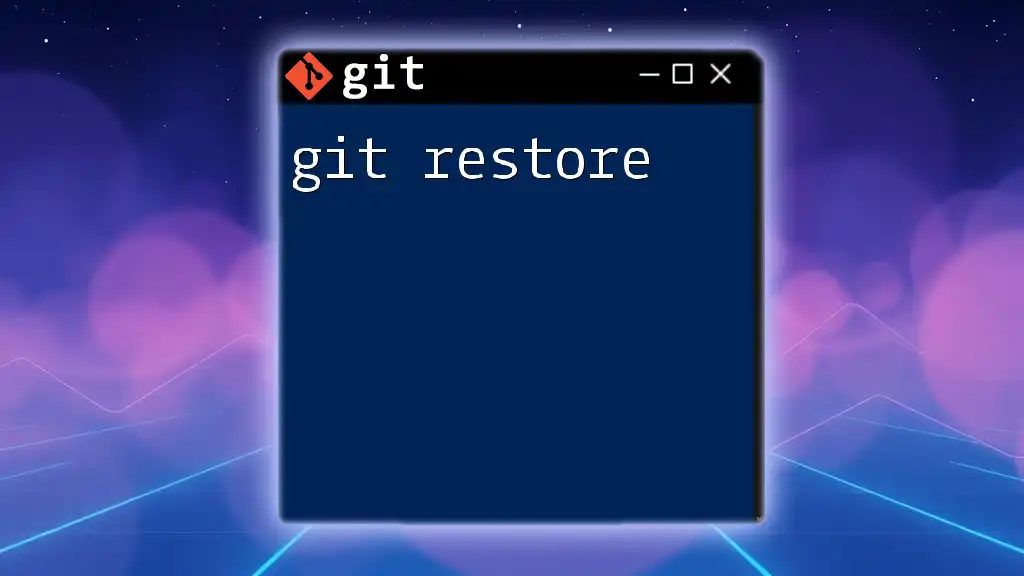
Streamlining Your Git Workflow
Tools and Resources
Consider leveraging graphical interfaces for Git, such as GitKraken or SourceTree, which can help you visualize the `git re` commands better. Furthermore, numerous online tutorials exist to aid your learning process beyond this guide.
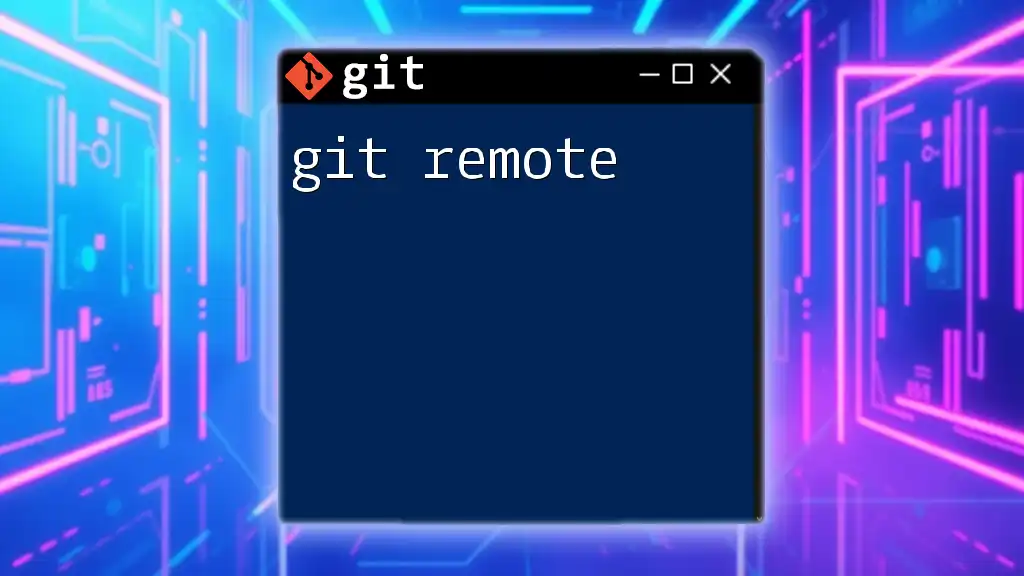
Common Pitfalls and Troubleshooting
Mistakes Made with `git re` Commands
One common error is performing a `hard reset` without ensuring that all necessary changes are backed up, resulting in loss of work. To avoid this pitfall, always double-check what is currently committed and consider using `git status`.
How to Fix Accidental Resets or Reverts
If you accidentally reset or reverted a commit, use `git reflog` to find the lost commit and recover it as explained previously. This proactive step ensures that you maintain control over your project's state.

Conclusion
Understanding and mastering `git re` commands can dramatically improve your workflow and efficiency in version control. Regularly practice these commands, and consider exploring further resources to deepen your knowledge. As you become more confident with these tools, you'll find that navigating your coding projects becomes a smoother and more intuitive experience.

